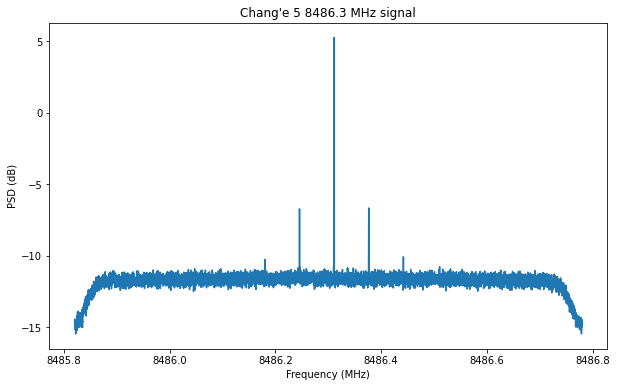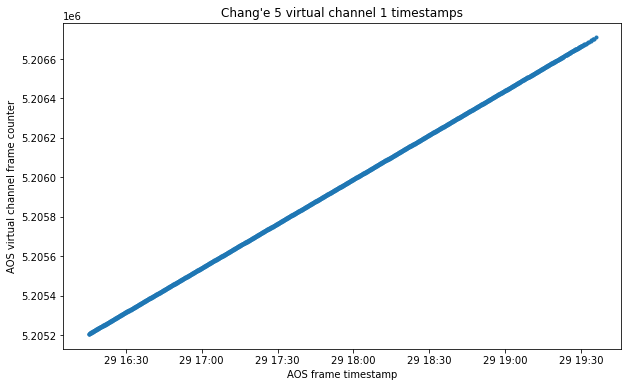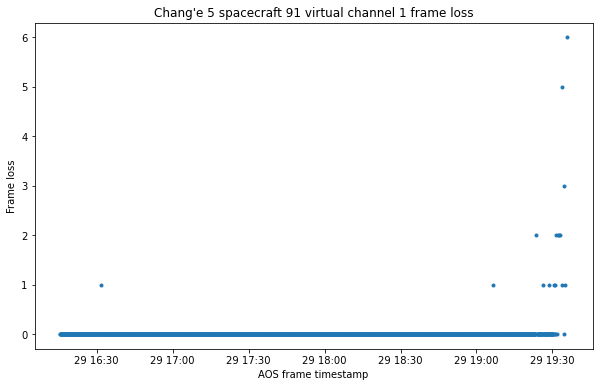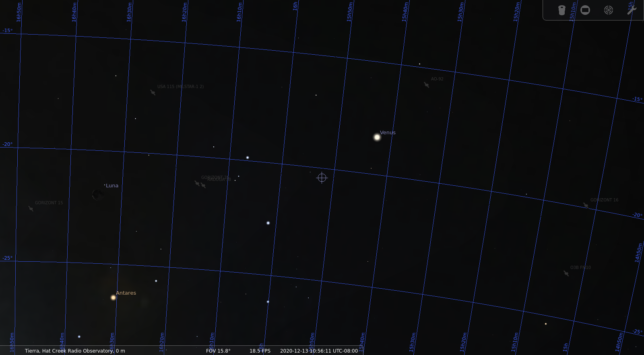It’s been a while since the last time I posted about Chang’e 5, back at the end of January. Since then we have been occasionally keeping an eye on it with the Allen Telescope Array, and Scott Tilley VE7TIL has also been monitoring with its home station. Until now, the spacecraft has spent its time slowly drifting around the Sun-Earth L1 point. However, it appears that now it is on the move.
The observations I’ve done last weekend from ATA, as well as reports from Scott and other observers show that it has deviated significantly from the ephemerides made by Bill Gray using our radio observations. This is not so surprising, because we haven’t been maintaining those ephemerides with new observations through part of July and all August. What is more surprising is that now the spacecraft’s right ascension and declination is changing rather fast.
The following are the observations I took with the ATA this weekend, using the Chang’e 5 telemetry signal at 8486.3 MHz.
| Timestamp (UTC) | RA (h) | DEC (deg) |
|---|---|---|
| 2021-08-28 21:00 | 7.931 | 14.73 |
| 2021-08-29 16:00 | 8.117 | 14.05 |
| 2021-08-29 21:30 | 8.150 | 13.80 |
This represents an angular movement of 3.25 deg per day, which is a lot if we compare it with the ephemerides around the end of July, which had an angular movement of 0.43 deg per day.
Still we don’t have enough data to fit a good trajectory. It is uncertain whether Chang’e 5 has manoeuvred or is simply being ejected out of the L1 point (orbits around the Langrage points are typically unstable and require station-keeping). We will keep gathering more data points to try to fit a better trajectory.
Yesterday I observed that the signal strength was really good. The figure below shows the spectrum of the signal. The two smaller spikes to the sides of the carrier are the data sidebands, which have an SNR of approximately 5 dB. The spacecraft is still transmitting at 512 baud.

In comparison, this is the signal on Saturday, which is a few dB weaker.

And here is the signal on 2021-07-31, which is the previous observation I made.

These last two spectra are more typical of the signal strengths we’ve been seeing with the ATA (using a single 6 metre dish) since Chang’e 5 arrived the neighbourhood of the L1 point.
Since the signal was so good, I left the ATA recording IQ data in order to decode the telemetry later. Unfortunately the spacecraft movement was fast enough that it exited the beam of the dish in approximately 3 hours (I was tracking a constant right ascension and declination). Still, during these 3 hours we got very few lost frames, as shown in these figures.


The telemetry data in the different APIDs in virtual channel 1 (which is the only virtual channel in use) looks very similar to the data decoded on 2021-01-24. The only noteworthy aspect is that APID 1029 is missing in the data from 2021-08-29. As during the end of January, the data looks rather static, with some periodic changes in channels that could correspond to temperature cycles.
The full plots of the decoded data can be seen in this Jupyter notebook, and the decoded data can be found here.
